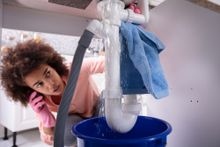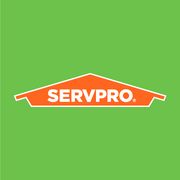4 FAQ About Mold Remediation

While mold breaks down organic material and therefore plays a vital role in nature, its role within the home is highly destructive. In addition to triggering allergy and asthma flare-ups, among other health problems, mold contributes to structural damage and foul odors. Below, learn more about mold remediation, including when it’s necessary to schedule one.
4 Common Questions About Mold Remediation
Where is mold commonly found in the home?
Most mold strains thrive in dark, damp conditions, though some appear on rotting fruit. You’ll find mold anywhere in your home that has sustained water damage, such as under saturated carpeting, in walls with plumbing leaks, around rotting window frames, and in damp basement corners. It also appears in bathrooms that have insufficient ventilation or fixture leaks, and on water-damaged drywall and other wooden surfaces.
What mold strains are dangerous?
 While some molds are relatively harmless, others create adverse reactions. Botrytis mold causes hay fever, sore throat, wheezing, and coughing, while aspergillus mold can cause serious lung problems, including inflammation and bleeding. Penicillium and Cladosporium molds cause allergic reactions and chronic sinus infections. Black mold considered the most dangerous. Also known as Stachybotrys chartarum, long-term exposure can result in anxiety, hair loss, muscle cramps, light sensitivity, unexplained weight gain, and memory loss.
While some molds are relatively harmless, others create adverse reactions. Botrytis mold causes hay fever, sore throat, wheezing, and coughing, while aspergillus mold can cause serious lung problems, including inflammation and bleeding. Penicillium and Cladosporium molds cause allergic reactions and chronic sinus infections. Black mold considered the most dangerous. Also known as Stachybotrys chartarum, long-term exposure can result in anxiety, hair loss, muscle cramps, light sensitivity, unexplained weight gain, and memory loss.
What should I do if I find mold?
If you discover the fungus in your home, call your local mold remediation company immediately. Infestations over 10 square feet require professional remediation to avoid allergic reactions and other health problems. If the infestation is only a few inches, wipe it up with white vinegar to instantly kill the spores. Use a dust mask, rubber gloves, and eye protection, and open some windows to circulate the air.
How does mold remediation solve the problem?
Mold remediation professionals have protective gear, equipment, and tools to remove large infestations quickly and completely, including those in HVAC systems. Once the mold has been eliminated, you may need water damage control efforts such as plumbing services or structural and flooring replacements depending on the infestation’s location and severity. Quality home ventilation is also necessary to prevent mold from returning, such as ensuring all vents are operational and using dehumidifiers to control indoor humidity.
If you suspect an infestation, don’t wait to contact the mold remediation experts at SERVPRO of Greater St. Augustine / St. Augustine Beach. All team members at the St. Augustine, FL, restoration company undergo training at SERVPRO’s corporate facility and gain WRT certifications. Call (904) 429-4457 to make an appointment or visit the website for more information about water damage services.
About the Business
Have a question? Ask the experts!
Send your question

